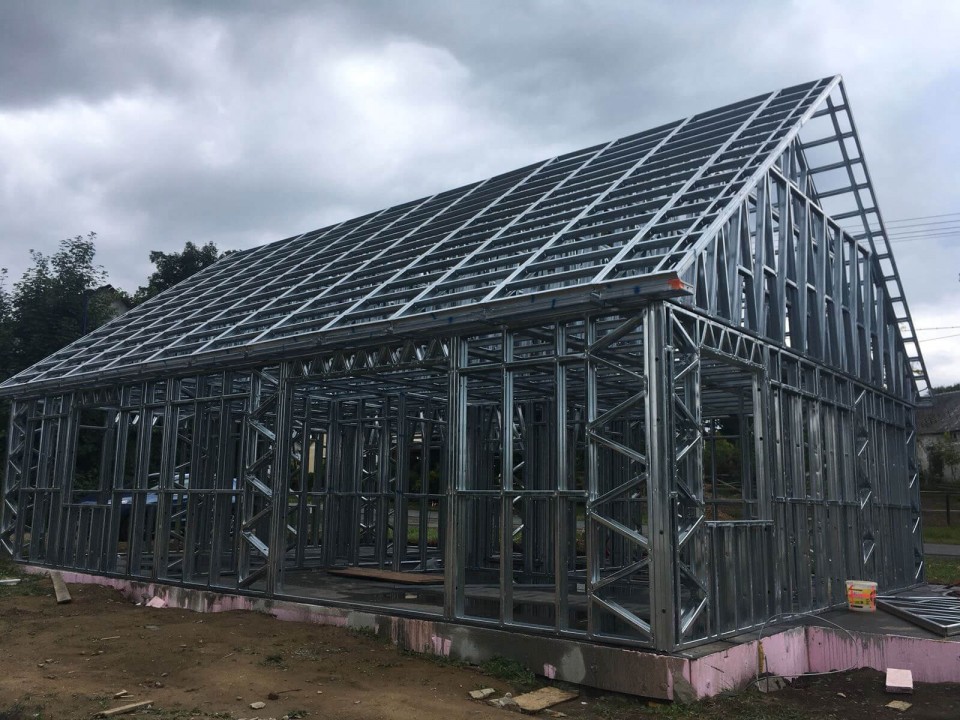Light Steel Construction and Modular Homes
Introduction
The construction industry is an ever-changing environment where new technology is always at the forefront. As the pressure comes to bear in the construction industry to supply alternatives to the more traditional methods of construction, innovative solutions are constantly being explored. Among these, lightweight steel framing and modular homes have emerged as promising alternatives. This paper aims to investigate whether these two alternative building methods can become an everyday building practice. By examining the existing problems in the current built environment and exploring how these alternative methods could solve them, we can gain valuable insights into the potential of steel construction. Steel Construction Institute

The Current State of the Construction Industry
The traditional methods of construction have long dominated the industry, but they come with a host of challenges. These include lengthy construction times, high labor costs, and environmental concerns. The need for more efficient and sustainable building practices has never been greater. As the industry evolves, it is crucial to explore alternative methods that can address these issues while maintaining the quality and durability of structures. Construction Dive
The Rise of Lightweight Steel Framing
Lightweight steel framing has gained significant attention in recent years. This method offers numerous advantages over traditional wood framing. Steel is stronger, more durable, and less susceptible to damage from pests and weather. Additionally, steel framing can be manufactured with high precision, reducing waste and improving construction efficiency. The use of lightweight steel framing can significantly reduce construction time and labor costs, making it an attractive option for builders and owners alike. Steel Framing Alliance
Modular Homes: A Game-Changer in Construction
Modular homes represent another innovative construction approach. These homes are built in a factory setting and then transported to the construction site for assembly. This method offers several benefits, including reduced construction time, improved quality control, and lower environmental impact. Modular homes can be customized to meet the specific needs of the owner, providing flexibility and versatility. The use of modular construction can also reduce the overall cost of building, making it an attractive option for a wide range of projects. Modular Home Manufacturers Association
Addressing the Challenges of Traditional Construction
The existing problems in the current built environment are well-documented. Traditional construction methods often lead to delays, cost overruns, and environmental degradation. By adopting alternative methods such as lightweight steel framing and modular homes, many of these issues can be mitigated. Steel construction offers a more sustainable and efficient approach to building, reducing waste and improving overall quality. Modular homes, with their factory-built precision and reduced construction time, provide a viable solution to the challenges faced by the industry. Green Building Advisor
The Potential for Everyday Adoption
As the construction industry continues to evolve, the potential for lightweight steel framing and modular homes to become everyday building practices is significant. These methods offer numerous benefits that address the existing problems in the current built environment. By embracing steel construction, designers, builders, and owners can enjoy improved efficiency, reduced costs, and enhanced sustainability. The future of the construction industry may very well lie in the widespread adoption of these innovative building methods. World Steel Association
Conclusion
The construction industry is at a crossroads, with new technologies and methods constantly emerging. Lightweight steel framing and modular homes represent two promising alternatives to traditional construction methods. By addressing the challenges of the current built environment and offering numerous benefits, these methods have the potential to become everyday building practices. As the industry moves forward, it is essential to explore and adopt innovative solutions that can improve efficiency, reduce costs, and promote sustainability. The future of steel construction looks bright, and its widespread adoption could very well shape the future of the industry. ArchDaily
